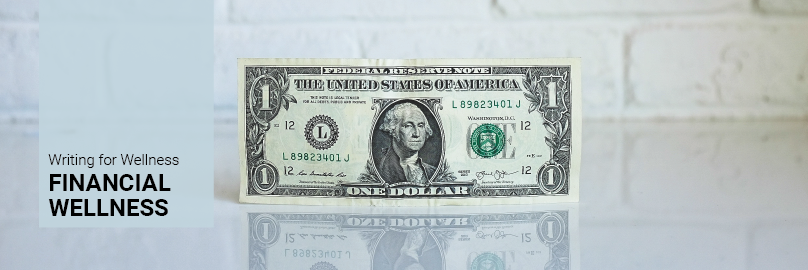I regretted volunteering to write a blog on financial wellness while I simultaneously procrastinate recertifying my student loans and find myself ordering lunch at the office more than I bring food from home. Then, I was reminded (thanks to my super smart supervisor!) that writing a blog on financial wellness doesn’t have to be about my own financial wellness, but an opportunity to share financial wellness tools with others!
Did you know there’s an awareness month for financial wellness? Financial Wellness Month is January, which makes sense because many Americans are (over)spending around the holidays in December, many are preparing or filing their taxes in January, and “saving more, spending less” is a common New Year’s resolution. In fact, it was 2017’s top resolution.
If financial wellness is a goal of yours, here are some tools that can help!
- Create a budget (the old-fashioned way) – Microsoft Excel has budget templates that can easily be used to track expenses from a desktop computer. Of course, pen and paper also work for jotting down income and expenses, if you’d like to keep a ledger.
- Create a budget (the 21st century way) – Mobile apps like Mint and You Need a Budget (YNAB) help you create budgets, track and pay bills, or even monitor your credit score. Apps like Wally let you create goals for your budget and even snap photos of receipts for easy recordkeeping.
- Track your spending – Dollarbird is a calendar app for your finances, allowing users to forecast future savings based on daily spending. Like Dollarbird, PocketGuard helps with tracking and connects with you financial accounts so you don’t have to manually enter every purchase or payment.
- Make your money work for you – There are a growing number of investment apps available. With Bitcoin topping at $11,000 as I write this, I wonder where I’d be if I invested when I first heard of the digital currency in 2010 and it was $0.07. But, there are other investment opportunities out there! Acorns is a tool for rounding up purchases to invest change in stocks and bonds – it’s considered microinvesting. Betterment helps users create an investment plan and create portfolios right from the palm of their hands.
- Get out of debt – Qoins is an app that rounds up purchases and applies the overage to high-interest debt. This could come in handy for the holiday over-spenders.
Do I use any of these strategies, personally? No. As I write this and revisit the definition of financial wellness, I’m reminded that it’s not about being Richie Rich, a money magnet, or even doing all of the “right” things. Financial wellness is about being satisfied with one’s own financial situation – currently or where it’s projected to be in the future. While I have to recertify my student loans (I’ll take some tips from Holley!), I’m satisfied with ordering lunch more often than not and with not using the tools above. I do have a couple of techniques for feeling somewhat of a sense of financial freedom, like using the Amazon Rewards Visa to earn points for purchases (reads: free books, gadgets, clothes – whatever I want!) or having 70,000 Southwest points because of the Southwest Rapid Rewards card (where to next?). I use these wisely, never pay interest, and always pay 100 percent of the balance. I rarely make an online purchase without first searching for coupon codes (which saved me 35 percent on an Energy Muse purchase this week). And, I often use Amazon Trade-In to sell items I don’t use before spending money on items I’d like to use (don’t use an old digital camera now that you have a new iPhone? That camera may be worth a $50 Amazon gift card). I do what works for me, for now.
Financial wellness is about what works for you, and how you feel about your financial situation today, or where it can be in 1 month, 1 year, 10 years…If you’re happy with your current or projected financial status, that’s excellent! If not, how can you start a new calendar year with a new relationship to money?


